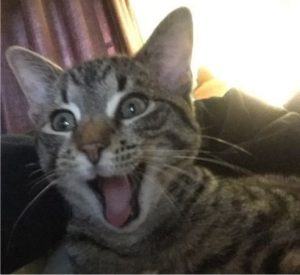 Magic Bites (Kate Daniels, Book 1)
Magic Bites (Kate Daniels, Book 1)
 Magic Burns (Kate Daniels, Book 2)
Magic Burns (Kate Daniels, Book 2)
 Magic Strikes (Kate Daniels, Book 3)
Magic Strikes (Kate Daniels, Book 3)
First and foremost, the number one commandment for a good urban fantasy (or, I suppose, whatever writing you wish to do) is: Thou shalt…
Do. The. Research!
This extends to the character as well as the author. Ten minutes on google, researching the clues Andrews’ protagonist was given by others — that she said she needed to research, even! -gave me the information necessary to unravel a major portion of the mystery in Andrews’ first book. Even if we assume google doesn’t work so well in her world (which is quite valid), she should have at least made a token effort to figure out the archetypes given to her in a vision by a known and respected clairvoyant — and she never did. This happened again in the second book: she didn’t do her research, and ended up giving someone incorrect information. I guess she was just lucky it didn’t get anyone killed, although to be fair to the protagonist it’s possible this was a mistake on the part of the author.
I was equally dismayed by the author’s casual dismissal, in the second book, of both the christian god and the pagan goddess as “too all encompassing and benign” — on the christian front that smacks patronizingly of a complete lack of understanding of the Inquisition, the Crusades, and the Holocaust. On the neo-pagan front… goodness, that statement is so woefully misguided that I don’t even know where to start! There’s a reason, though, that the very, very earliest and most all-powerful goddesses were manifestations of both life and death.
It’s so easy to do research with the web today, that I’m shocked more authors don’t do it. I mean, I’m not a big fan of public humiliation, but honestly, if (like Harrison with her witch-cop) you have your protagonist state how important precision is as she’s concocting a spell to turn into some sort of rodent — and then her spell turns her into a mink! -well, when people point and laugh at you, there’s not a whole lot I or anyone will be able to say in your defense. I’m not talking about research into mythical entities either; I really don’t care if your vampires twinkle. Heck, for all I care they can have an irresistible urge to tapdance and sing “Hello, My Baby!” when exposed to sunlight. Just tell us you’ve deliberately chosen this — that’s how it is in your world — and I’m good. I likely won’t be reading your book if that’s really what your vampires do, admittedly — but as far as I’m concerned, you’ve covered the necessary bases for willing suspension of disbelief.
Seriously, simply typing “mink family” into google instantly reveals they’re mustelids. What was Harrison thinking?! Even just a little research reveals the falsity of various cultural beliefs regarding biology which unfortunately keep popping up in the urban fantasies I’ve been reading — like the old chestnut about wolfpacks invariably being led by males, or lions being the “king of the beasts” — both of those are emphatically not true. First, there are indeed female led wolf packs. Secondly, male lions are some of the biggest moochers in the world — it is the females who are the really effective hunters in the pride, and the big males often steal both their kills and the kills of any smaller and weaker predators. Frankly, they’re not very “royal” at all.
For a true “king of the beasts” I really have to pick the elephant; there’s nothing quite so scary and dangerous as a crazy male African elephant in musth, when they are at their most aggressive and irritable. Short of that, it’s the big, herd-leading matriarchs that pack the most strength, brains, and killing power — which would give us a “queen of the beasts” as the most dangerous. Even the relatively mild-mannered Indian elephants cause tigers to yield to them, to the extent that humans there go tiger-hunting on elephant-back — because if they don’t, the tiger hunts them, and usually far too successfully.
So if you’re going to have animals and their behavior be a big part of your book… please, research them first!
Further, as I note in my review of Armstrong’s book, one of her story’s most basic premises is just as completely faulty — and easily researched: she states women aren’t as able to endure pain as men are. Unfortunately for her beliefs, every independent study ever done on the subject demonstrates conclusively that women have more endurance, and handle pain better, than men. My guess is Armstrong had neither given birth nor engaged in any very physical sport by the time she wrote her story.

